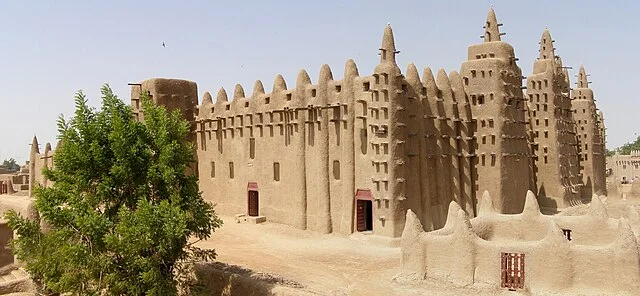The Great Mosque of Djenné, located in the town of Djenné in Mali, is one of the most significant examples of Sudano-Sahelian architecture. This unique structure, built entirely of sun-baked mud bricks (adobe), attracts scholars and visitors alike for its historical, cultural, and architectural value. As the largest mud-brick building in the world, it also serves as a focal point of Islamic practice and communal life in the region.
Get your dose of History via Email
Historical Background
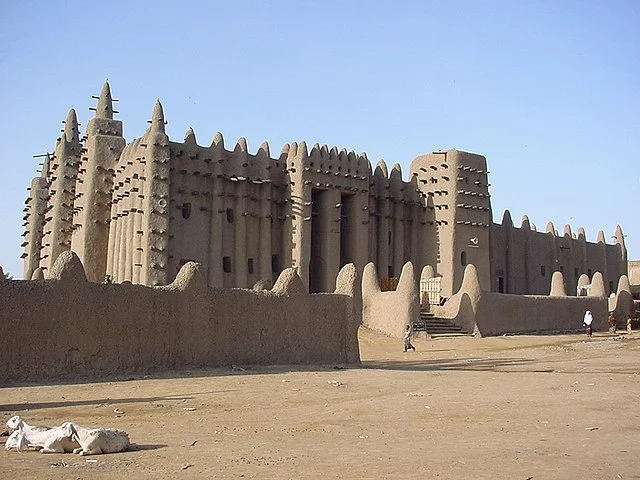
The origins of the Great Mosque of Djenné trace back to the 13th century. Sultan Koi Konboro, the first Muslim ruler of Djenné, likely commissioned the construction of the original mosque during his reign. This initial structure held immense importance as it represented Djenné’s growing significance as a center of Islamic learning and trade. By the 15th and 16th centuries, Djenné had become an influential Islamic hub, drawing scholars from across West Africa.
In 1834, however, Seku Amadu, a Fulani ruler, deemed the original structure unsuitable for worship and ordered its demolition. He constructed a simpler mosque in its place. The current mosque, which resembles the original more closely, was rebuilt in 1907 under French colonial administration and local guidance. This reconstruction effort relied on oral histories and the skills of local artisans, ensuring a continuity of traditional architectural practices.
Architectural Design and Materials
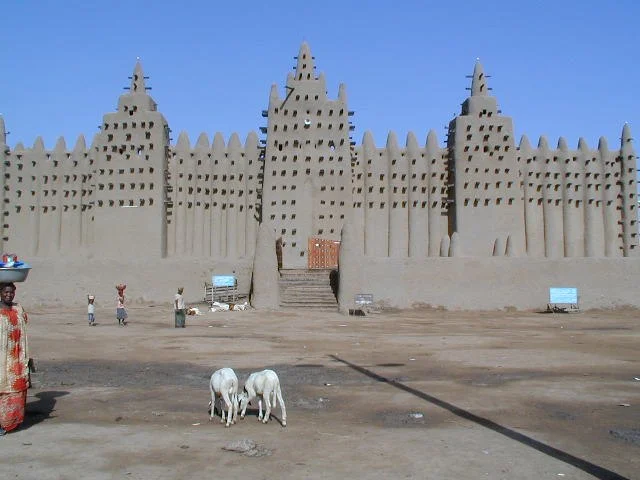
The Great Mosque of Djenné stands as a testament to the ingenuity and durability of traditional Sudano-Sahelian architecture. The mosque’s walls, made from sun-baked adobe bricks, are coated with a smooth layer of mud plaster. Wooden beams called “torons” protrude from the walls, both supporting the structure and acting as scaffolding for annual repairs.
The structure rests on a raised platform to protect it from floodwaters. Three prominent minarets, each topped with an ostrich egg as a symbol of fertility and purity, dominate the mosque’s facade. Small holes in the walls allow for ventilation, a crucial feature in Mali’s hot climate. The interior, though less elaborate than the exterior, can accommodate thousands of worshippers, illustrating the mosque’s central role in the community.
Role in the Community
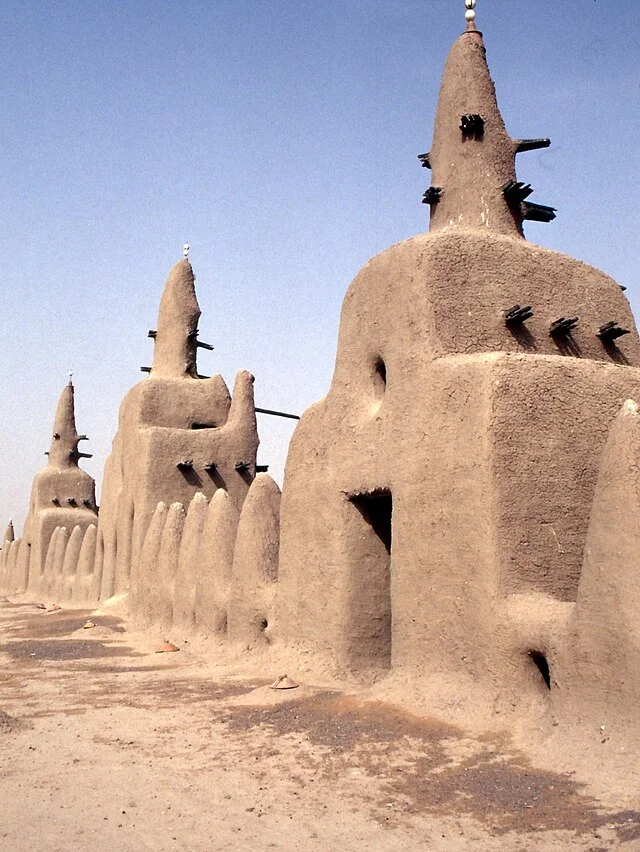
Beyond its religious function, the Great Mosque of Djenné serves as a cultural and social cornerstone for the people of Djenné. The mosque hosts the annual Crepissage, a communal festival dedicated to the repair and maintenance of the structure. During this event, the community gathers to reapply mud plaster to the mosque, preserving it from erosion caused by rain and sun exposure. Men mix mud and water, while women provide water and organize supplies, symbolizing communal unity and continuity.
The mosque also symbolizes Djenné’s historical significance as a center for Islamic learning. Djenné’s scholars, associated with the mosque, maintain a tradition of teaching Islamic studies and sciences, a legacy dating back centuries.
Conservation Challenges
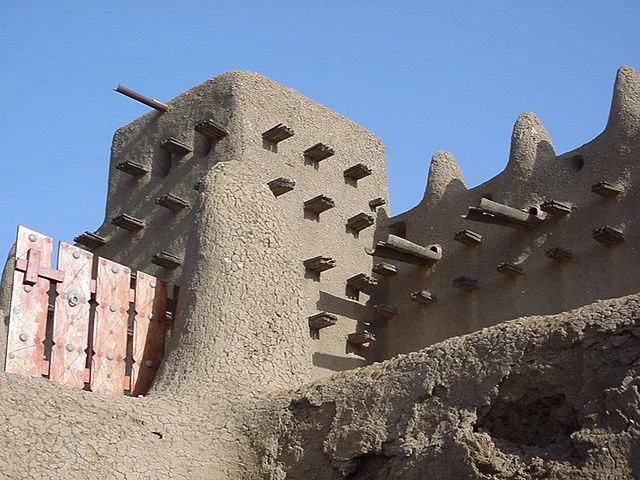
Preserving the Great Mosque of Djenné presents unique challenges. Adobe requires regular maintenance, especially in the face of seasonal rains. While the annual Crepissage helps maintain the structure, climate change and modernization pose additional threats. Increasingly erratic rainfall patterns and the availability of alternative construction materials have led to a gradual decline in traditional mud-building skills among the younger generation.
International organizations like UNESCO, which designated the mosque a World Heritage Site in 1988, have partnered with local communities to promote conservation. However, the future of this iconic structure remains closely tied to local commitment and the continuity of traditional practices.
Conclusion
The Great Mosque of Djenné stands as a remarkable example of Sudano-Sahelian architecture and a testament to the cultural heritage of Mali. From its historic origins to its role in the community and ongoing conservation efforts, the mosque embodies the resilience and artistry of Djenné’s people. Through initiatives like the Crepissage and community-driven conservation efforts, the people of Djenné continue to honor and preserve this symbol of their faith, culture, and history.
Source:

